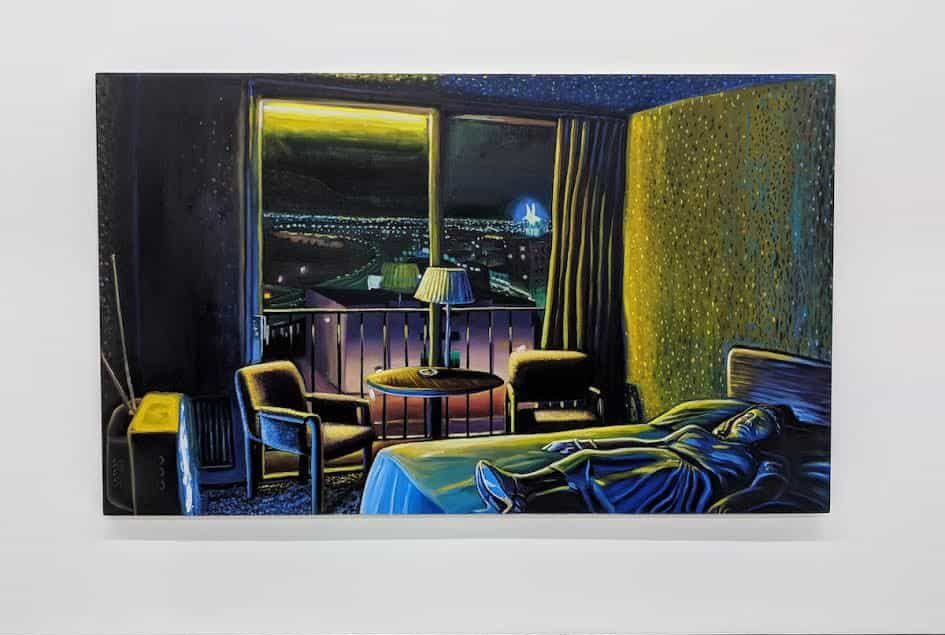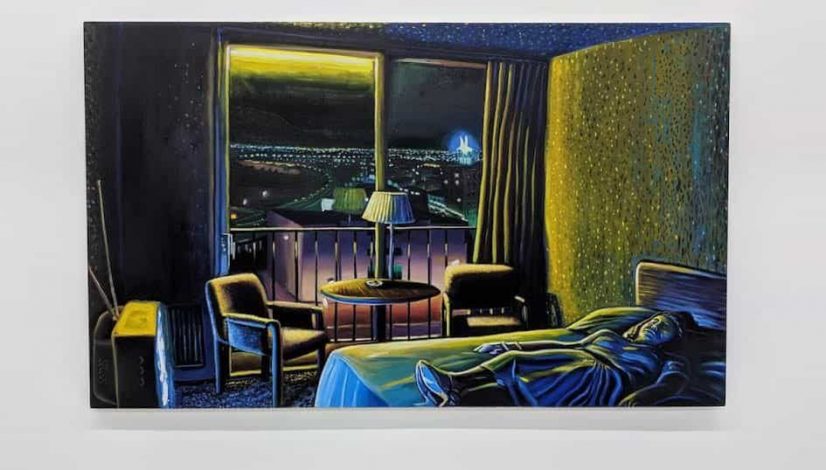Explore the Aesthetic of Influences at Nicodim Gallery in Los Angeles
It’s common knowledge that cannabis can enhance a person’s creativity and their appreciation for art and music. Thus, there was no pretense at Los Angeles’ Nicodim Gallery a couple weekends ago that it was anyone’s first time getting high at an art show. It was, however, Nicodim’s first installment of Influences, a new series that explores the relationship between psychoactive substances and art. For this inaugural event, guests were invited to consume a little cannabis, then absorb the work of painter Robert Yarber.
Nicodim Gallery Creative Director Aaron Moulton and Global Director Benjamin Lee Ritchie Handler spoke with High Times about two limitations the traditional gallery has. Moulton noted that when we see art presented in an exhibition, we might miss the space “between the artist and the canvas, which is often quite influenced by psychoactive substances.”
Meanwhile, Ritchie Handler noted that the stark “white box” of a gallery space can often feel oppressive in a way that makes those who aren’t monied collectors uncomfortable. The average person who is interested in art typically experiences it in a more social environment—be it a gallery opening, art-centric event, or dinner party—where they might already be in a psychoactive state.

Juliet Bennett Rylah
So, what if we—as viewers—attempt to recreate the psychoactive state an artist might have been in when making their work or, alternatively, experience a work in a social, psychoactive state that enhances it? Take Yarber, who told Influences’ audience he’s been consuming cannabis since he was 17-years-old and frequently uses it creatively.
“We can get into [Yarber’s] mindset, and it leads to a more intimate understanding of the artwork,” Ritchie Handler said. “With Influences, I think we’re trying to get the people into the mindset of the artist rather than in the mindset of some tax bracket they will never be a part of.”
Robert Yarber, whose Return of the Repressed show has been on display at Nicodim Gallery since Sept. 8, is a good starting point for such a series. His work is surreal, even when depicting a scene as commonplace as his mother taking a nap in a Texas motel room during a layover. Colors are often deep and dark, yet highlighted by strokes of neon, sometimes feeling like strange, noir dreams. Yarber is frequently credited with providing the aesthetic inspiration for Terry Gilliam’s Fear and Loathing in Las Vegas (1998). In an interview with the American Society of Cinematographers, cinematographer Nicola Pecorini explains that Gilliam handed him a book of Yarber’s paintings as a guide for what the film should look like. Pecorini described Yarber’s art as “very hallucinatory: the paintings use all kinds of neon colors, and the light sources don’t necessarily make sense.”
For the event, Nicodim partnered with Medmen and HoneyVape, who set up three stations—indica, sativa, and hybrid—with two sample strains at each. Strains were paired to Yarber’s work.
For instance, at the indica station, guests could choose between OG Kush and Blackberry Kush, then ponder the painting of Yarber’s napping mother. Here, Ritchie Handler drew the comparison to indica’s “couch lock” reputation.
At the hybrid station, Tangerine Dream and Bubblegum were available, next to several paintings that depicted couples flying or falling in midair—a common theme in Yarber’s work. Whether they’re plummeting to their doom or soaring to bliss often unclear. The comparison was made between these paintings and the sativa/indica battle within a hybrid strain. Over at the sativa station, guests could choose between Blue Dream and Jack Herer, then observe the particularly colorful paintings hung nearby.

Juliet Bennett Rylah
Mid-event Ritchie Handler led guests on a brief tour of the stations, where HoneyVape VP of Sales Joss McKernan talked about each strain and its effect. Then, Yarber discussed his work, as well as his relationship with cannabis.
“Cannabis helped me release any tensions that would block the visualization process,” Yarber said. “It permitted me to enter the plane of the image, and to permeate myself within the scene. The mind-body split would be reduced or diminished, so suddenly the body was in the mind and there was a permission to explore there. There was somatic integration with the visuals as well. The colors would be enhanced. The spatial relationship would be enhanced. I’d be unburdened.”
Yarber notes he may have come to those creative heights anyhow, but remains grateful to the “great gift the plant has given me.” He also notes that cannabis is a tool and like any tool, one size does not fit all. He laughs when he talks about its possible negatives in the painting process.
“I might be working on something and say, ‘I like the painting, but everything on the left should be on the right,’” he said. “The downside of cannabis, as an artist, is that there’s this kaleidoscopic aspect where every day looks like a new possibility, and so you’ll never finish.”
Cannabis will not always be the tool of choice for Influences either. Future installments of the series might explore substances including craft beer or rapé, a Peruvian snuff typically administered by a shaman.
Nicodim Gallery is located at 571 S. Anderson Street, Ste. 2. in the Arts District. Yarber’s work remains on display at Nicodim Gallery through October 20. Join the gallery’s mailing list here to find out about future Influences events.
The post Explore the Aesthetic of <i>Influences</i> at Nicodim Gallery in Los Angeles appeared first on High Times.


